Complete Solutions to ADDITIONAL EXERCISES of chapter CURRENT ELECTRICITY of Class 12 book with complete answers and questions
| Class 12 | PHYSICS |
| Chapter | CURRENT ELECTRICITY |
| VIKRAM | ADDITIONAL EXERCISES |
| Number Of Questions | 22 |
| Academic Year | 2023-24 |
The earth's surface has a negative surface charge density of `10^(-9) C m^(-2)`. The potential difference of 400 kV between the top of the atmosphere and the surface results (due to the low condutivity of the lower atmosphere) in a current of only 1800 A over the entire globe. if there were no mechanism of sustaining atmospheric electric field, how much time (roughly) would be required to neutralise the earth's surface (This never happens in parctice there is a mechanism to replenish electric charges, namely the continual thunderstorms and lightning in different parts of the globe). (Radius of earth `= 6.3 xx 10^(6) m`)
View SolutionSix lead-acid type of secondary cells each of emf 2.0 V and internal resistance 0.015 `Omega` are joined in series to provide a supply to provide a supply to a resistance of `8.5 Omega`. What are the current drawn from the supply and its terminal voltage?
View SolutionA secondary cell after long use has an emf of 1.9 V and a large internal resistance of 380 `Omega`. What maximum current can be drawn from the cell? Could the cell drive the starting motor of a car?
View SolutionTwo wires of equal length, one of aluminium and the other of copper have the same resistance. Which of the two wire is lighter? Hence explain why aluminium wires are preferred for overhead power cables. `(rho_(Al) = 2.63 xx 10^(-8) Omega m, rho_(Cu) = 1.72 xx 10^(-8) Omega m` Relative density of Al = 2.7 of Cu = 8.9)
View SolutionWhat conclusion can you draw from the following observations on a resistor made of alloy manganin?
`{:("Current","Voltage","Current","Voltage"),(A,V,A,V),(0.2,3.94,3.0,59.2),(0.4,7.87,4.0,78.8),(0.6,11.8,5.0,98.6),(0.8,15.7,6.0,118.5),(1.0,19.7,7.0,138.2),(2.0,39.4,8.0,158.0):}`
View SolutionA steady current flows in a metallic conductor of non-uniform cross-section. Which of these quantities is constant along the conductor : current, current density, electric field, drift speed?
View SolutionIs Ohm's law universally applicable for all condcuting elements? If not, give examples of elements which do not obey Ohm's law.
View SolutionA low voltage supply from which one needs high currents must have very low internal resistance. Why?
View SolutionA high tension (HT) supply of, say 6 Kv must have a very large internal resistance. Why?
View SolutionChoose the correct alternative:
(a) Alloys of metals usually have (greater/less) resistivity than that of their consituent metals.
(b) Alloys usually have much (lower/higher) temperature coefficients of resistance than pure metals.
The resistivity of the alloy manganin is nearly independent of/increases rapidly with increase of temperature.
The resistivity of a typical insulator (e.g., amber) is greater than that of a metal by a factor of the order `(10^(22) // 10^(23))`.
View Solution(a) Given n resistors each of resistance R, how will you combine them to get the (i) maximum, (ii) minimum effective resistance? What is the ratio of the maximum to minimum resistance?
View SolutionGiven the resistances of `1 Omega, 2 Omega, 3 Omega` how will be combine them to get an equivalent resistance of (i) (11/3) `Omega` (ii) (11/5) `Omega` (iii) `6 Omega` (iv) (6//11) `Omega`
View SolutionDetermine the equivalent resistance of networks shown in Fig.

View SolutionDetermine the current drawn from a 12 V supply with internal resistance `0.5 Omega` by the infinite network shown in Fig. Each resistor has `1 Omega` resistance.

View SolutionFigure shows a potentiometer with a cell of 2.0 V and internal resistance `0.40 Omega` maintain a potential drop across the resistor wire AB. A standard cell which maintains a constant emf of 1.02 V (for very moderate currents upto a few mA) gives a balances point at 63.3 cm length of the wire. To ensure very low currents drawn from the standard cell, a very high resistance of `600 Omega` is put is series with it, which is shortedd close to the balance point. The standard cell is then replaced by a cell of unknown emf `epsilon` and the balance point found similarly, turns out to be at 82.3 cm length of the wire.
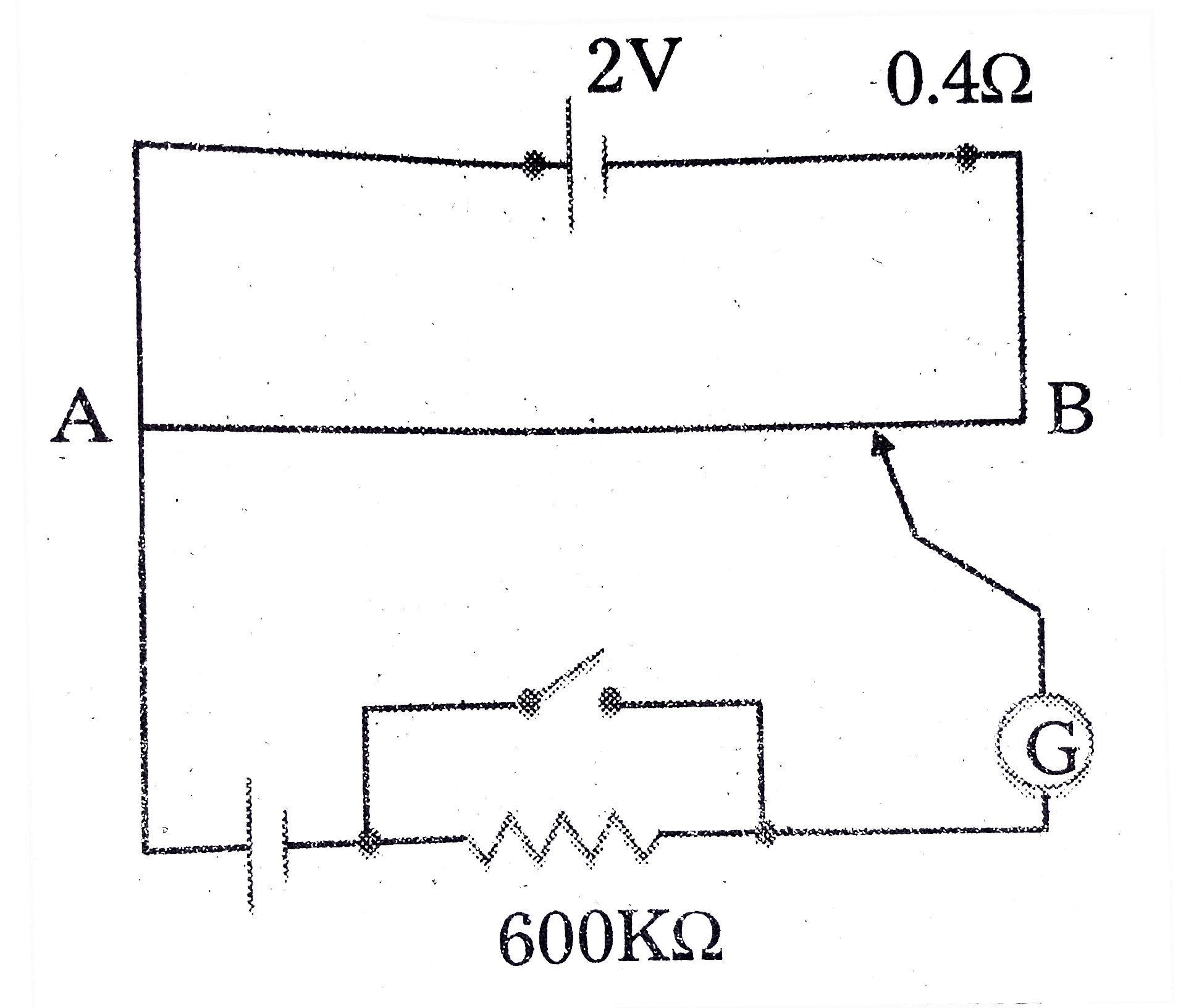
What is the value `epsilon` ?
View SolutionFigure shows a potentiometer with a cell of 2.0 V and internal resistance `0.40 Omega` maintain a potential drop across the resistor wire AB. A standard cell which maintains a constant emf of 1.02 V (for very moderate currents upto a few mA) gives a balances point at 63.3 cm length of the wire. To ensure very low currents drawn from the standard cell, a very high resistance of `600 Omega` is put is series with it, which is shortedd close to the balance point. The standard cell is then replaced by a cell of unknown emf `epsilon` and the balance point found similarly, turns out to be at 82.3 cm length of the wire.
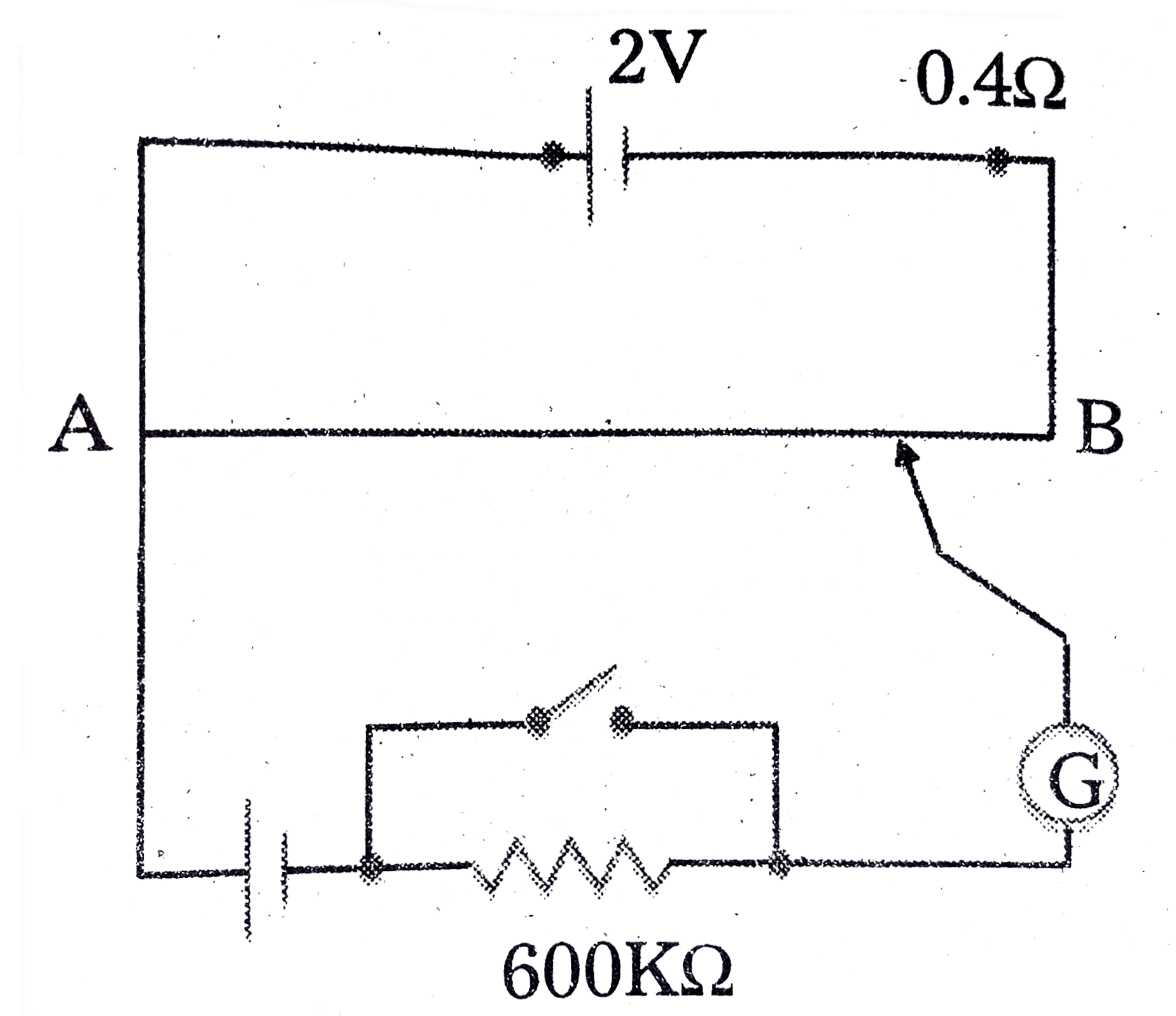
What purpose does the high resistance of 600 k `Omega` have?
View SolutionFigure shows a potentiometer with a cell of 2.0 V and internal resistance `0.40 Omega` maintain a potential drop across the resistor wire AB. A standard cell which maintains a constant emf of 1.02 V (for very moderate currents upto a few mA) gives a balances point at 63.3 cm length of the wire. To ensure very low currents drawn from the standard cell, a very high resistance of `600 Omega` is put is series with it, which is shortedd close to the balance point. The standard cell is then replaced by a cell of unknown emf `epsilon` and the balance point found similarly, turns out to be at 82.3 cm length of the wire.
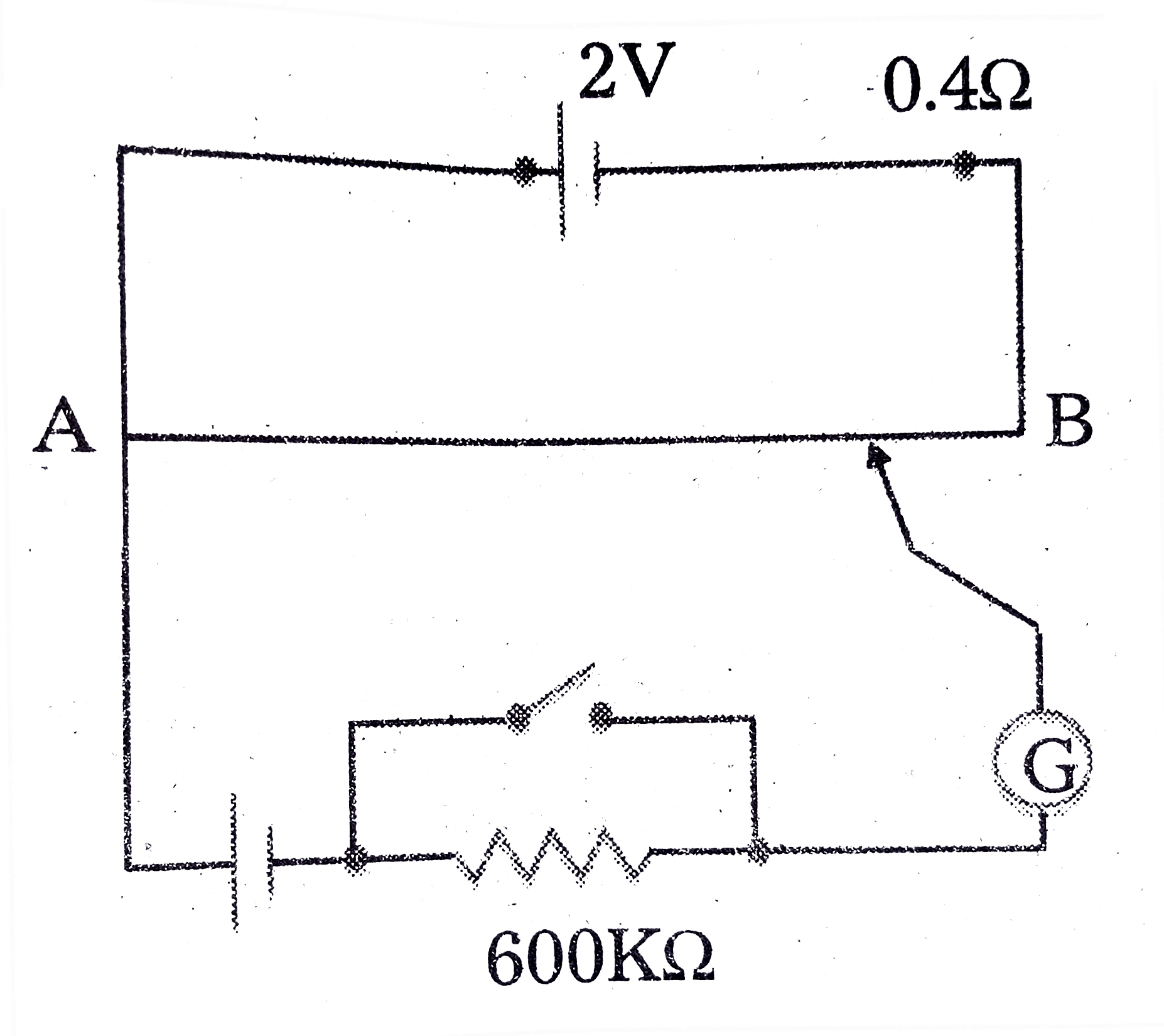
Is the balance point affected by this high resistance?
View SolutionFigure shows a potentiometer with a cell of 2.0 V and internal resistance `0.40 Omega` maintain a potential drop across the resistor wire AB. A standard cell which maintains a constant emf of 1.02 V (for very moderate currents upto a few mA) gives a balances point at 63.3 cm length of the wire. To ensure very low currents drawn from the standard cell, a very high resistance of `600 Omega` is put is series with it, which is shortedd close to the balance point. The standard cell is then replaced by a cell of unknown emf `epsilon` and the balance point found similarly, turns out to be at 82.3 cm length of the wire.
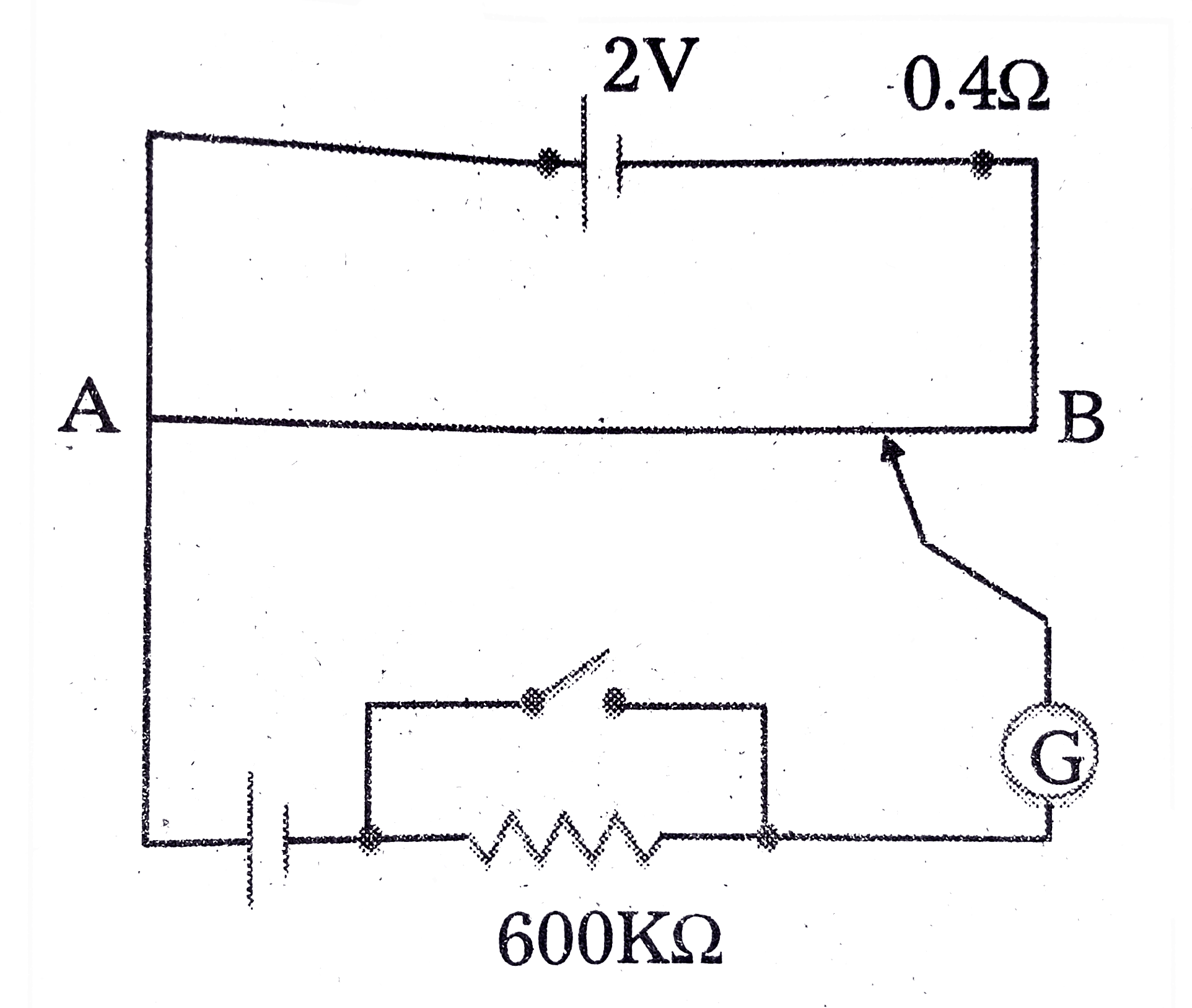
Is the balance point affected by the internal resistance of the driver cell.
View SolutionFigure shows a potentiometer with a cell of 2.0 V and internal resistance `0.40 Omega` maintain a potential drop across the resistor wire AB. A standard cell which maintains a constant emf of 1.02 V (for very moderate currents upto a few mA) gives a balances point at 63.3 cm length of the wire. To ensure very low currents drawn from the standard cell, a very high resistance of `600 Omega` is put is series with it, which is shortedd close to the balance point. The standard cell is then replaced by a cell of unknown emf `epsilon` and the balance point found similarly, turns out to be at 82.3 cm length of the wire.
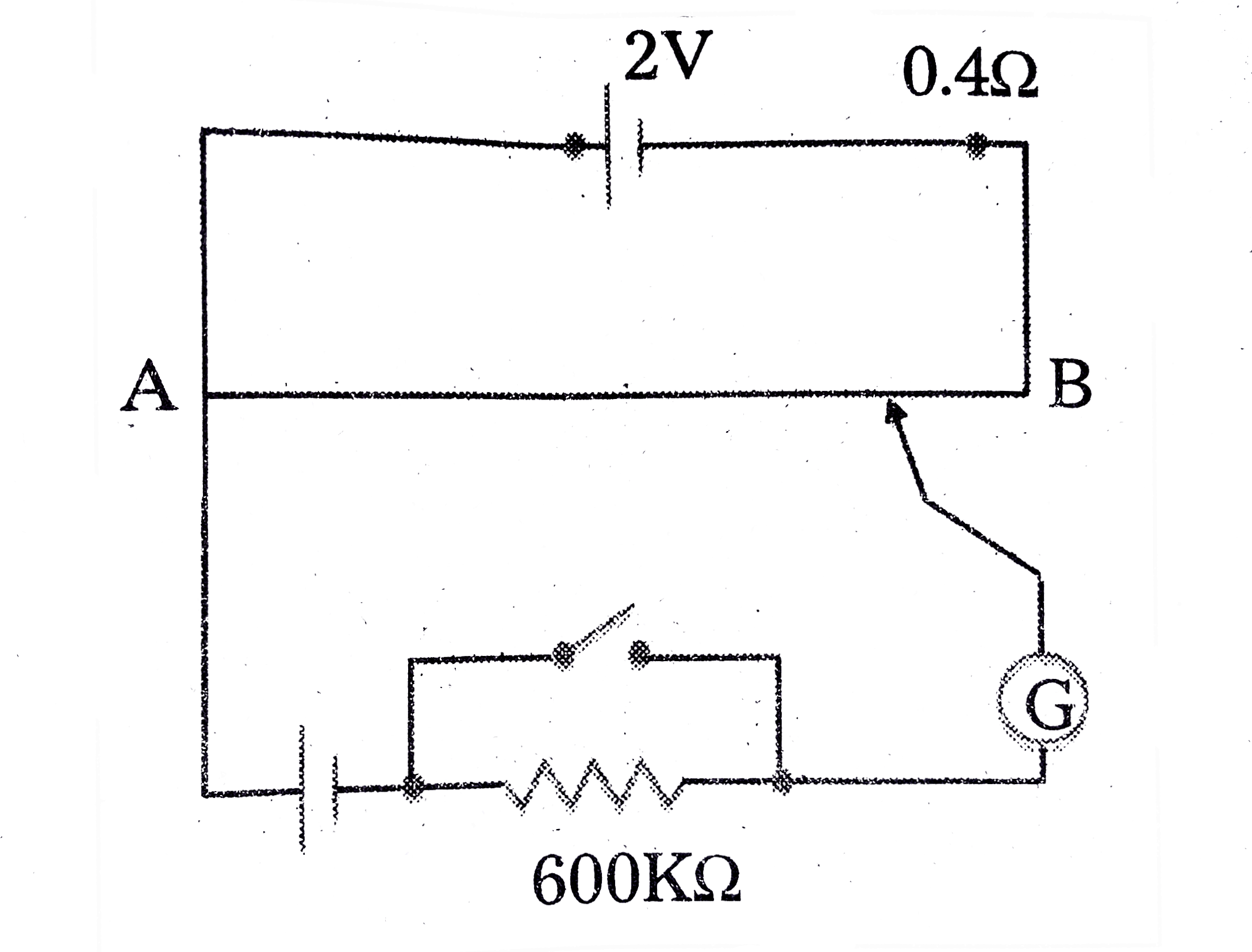
Would the method work in the above situation if the driver cell of the potentiometer had an emf of 1.0 V instead of 2.0 V?
View SolutionFigure shows a potentiometer with a cell of 2.0 V and internal resistance `0.40 Omega` maintain a potential drop across the resistor wire AB. A standard cell which maintains a constant emf of 1.02 V (for very moderate currents upto a few mA) gives a balances point at 63.3 cm length of the wire. To ensure very low currents drawn from the standard cell, a very high resistance of `600 Omega` is put is series with it, which is shortedd close to the balance point. The standard cell is then replaced by a cell of unknown emf `epsilon` and the balance point found similarly, turns out to be at 82.3 cm length of the wire.

Would the circuit work well for determining an extermely small emf, say of the order of a few mV (such as the typcial emf a thermo-couple)? if not, how will you modify the circuit?
View SolutionFigure shows a potentiometer circuit for comprasion of two resistances. The balance point with a standard resistor `R = 10.0 Omega` is found to be 58.3 cm, while that with the unknown resistance X is 68.5 Cm. determine the value of X. What might you do if you failed to find a balance point with the given cell of emf `epsilon` ?
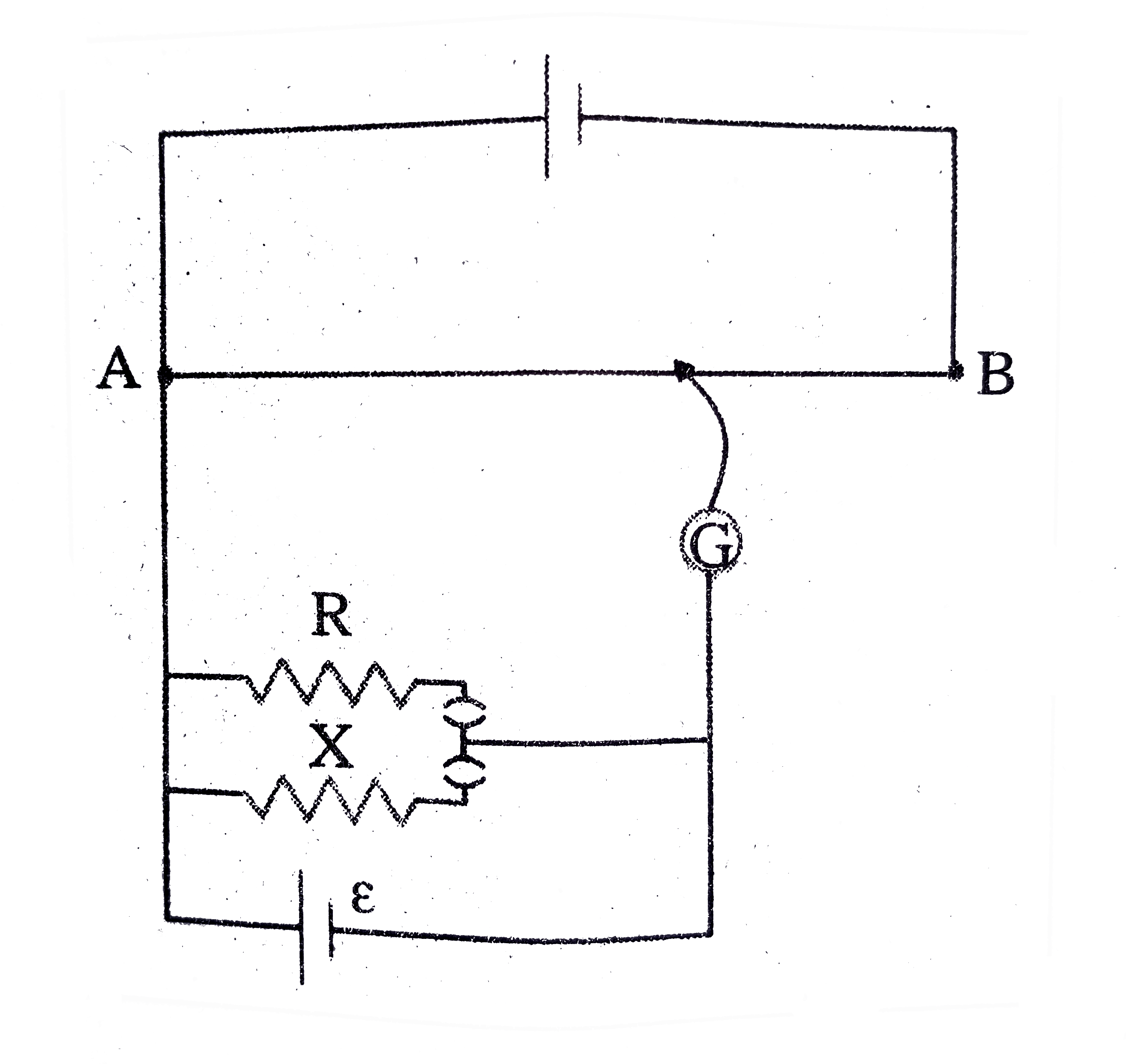
View SolutionFigure shows a 2.0 V potentiometer used for the determination of internal resistance of a 1.5 V cell. The balance point of the cell in open circuit is 76.8 cm. when a resistor of `9.5 Omega` is used in the external circuit of the cell, the balance point shifts to 64.8 cm length of the potentiometer wire. Determine the internal resistance of the cell.
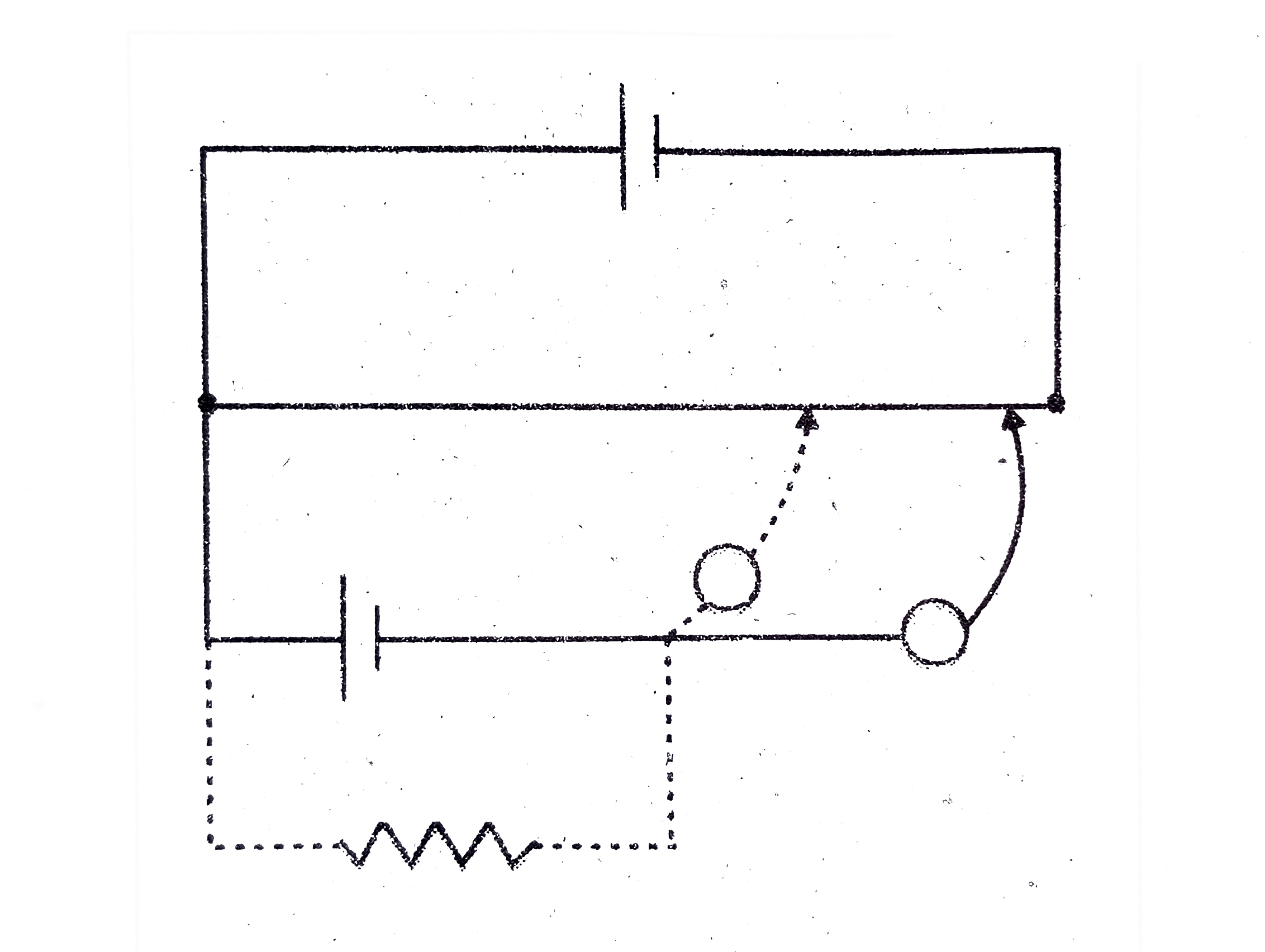
View Solution
ADDITIONAL EXERCISES questions and complete solutions for chapter CURRENT ELECTRICITY of VIKRAM PUBLICATION ( ANDHRA PUBLICATION) of Class 12